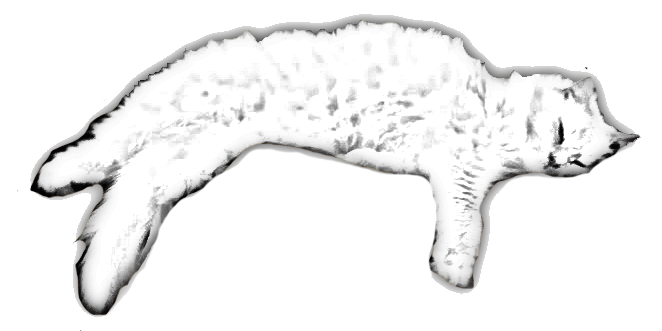We've all heard the saying that cats have nine lives, but did you know that some cat breeds have nine inches of luxurious fur?
Welcome to our ultimate guide to long-haired indoor cat breeds. From the majestic Maine Coon to the elegant Persian, we'll explore the different breeds, help you choose the perfect feline companion, share grooming tips, discuss health considerations, and show you how to create an enriching environment for your long-haired indoor cat.
Let's dive in and discover the world of these fluffy wonders.
Differentiating Long-Haired Indoor Cat Breeds
Now let's delve into how we can differentiate between long-haired indoor cat breeds.
When considering the pros and cons of owning a long-haired indoor cat, it's important to note that their luxurious coats require regular grooming to prevent matting and hairballs. However, the extra effort is often rewarded with the beauty and elegance that these breeds exude.
Despite popular misconceptions, long-haired indoor cats aren't necessarily more prone to shedding and allergies. In fact, some long-haired breeds, like the Siberian or Balinese, are known to produce fewer allergens than their short-haired counterparts.
Additionally, many people assume that long-haired cats are less active or playful, but this isn't always the case. Breeds like the Maine Coon or Ragdoll can be just as energetic and playful as their short-haired counterparts.
Choosing the Perfect Long-Haired Indoor Cat Breed
When it comes to choosing the perfect long-haired indoor cat breed, we must carefully consider our options and make an informed decision. One important factor to consider is whether you want an indoor or outdoor cat.
Indoor long-haired cats are generally better suited for a controlled environment where they can be protected from potential dangers and harsh weather conditions. On the other hand, outdoor long-haired cats may have more freedom to explore, but they're also exposed to risks such as predators, traffic, and diseases.
Additionally, training long-haired indoor cats is essential to ensure they adapt well to their indoor surroundings. This includes providing them with plenty of toys, scratching posts, and regular playtime to keep them mentally and physically stimulated.
Grooming Tips for Long-Haired Indoor Cats
To keep our long-haired indoor cats looking their best, we should regularly groom them and take measures to prevent matting and shedding. Proper grooming not only maintains their beautiful coat but also promotes their overall health and well-being. However, it's important to avoid common grooming mistakes that could potentially harm our feline friends.
Here are some tips to help you groom your long-haired indoor cats effectively:
- Brushing: Regular brushing is crucial to prevent matting. Use a wide-toothed comb or a slicker brush to gently remove tangles and loose hair.
- Bathing: While long-haired cats may require occasional baths, it's important to use cat-specific shampoos and to rinse thoroughly to avoid skin irritation.
When it comes to grooming tools for long-haired indoor cats, consider investing in:
- High-quality brushes and combs: Look for brushes with long, flexible bristles to reach the undercoat effectively.
- Dematting tools: These tools help remove mats without causing discomfort or pain to your cat.
Health Considerations for Long-Haired Indoor Cat Breeds
Taking proper care of our long-haired indoor cat breeds involves considering their unique health needs. While these cats are beautiful and elegant, they're also prone to certain common health issues.
One of the most prevalent health problems for long-haired cats is hairballs. Their long fur can cause them to ingest excessive amounts of hair when grooming, leading to the formation of hairballs in their digestive tract. To prevent this, regular grooming and brushing are essential to remove loose hair.
Additionally, long-haired cats may develop skin problems if their fur isn't adequately maintained. It's also important to pay attention to their dietary needs. Long-haired cats require a balanced diet that includes high-quality protein and healthy fats to maintain their coat's health and shine.
Providing them with a well-balanced and nutritious diet will help keep their skin and fur in optimal condition.
Creating an Enriching Environment for Long-Haired Indoor Cats
Our long-haired indoor cat's well-being and happiness are greatly influenced by the enriching environment we create for them. To ensure they thrive, it's important to consider their unique needs. Here are some key aspects to consider when creating an enriching environment for long-haired indoor cats:
- Providing ample vertical space: Long-haired cats love to climb and observe their surroundings from a higher vantage point. Installing cat trees or shelves can give them the opportunity to satisfy their natural instincts.
- Interactive toys and puzzles: Long-haired cats are intelligent and need mental stimulation. Offering interactive toys and puzzles can keep them engaged and prevent boredom.
- Grooming routine: Managing shedding in long-haired indoor cats is crucial. Establishing a regular grooming routine, including brushing their coat to prevent matting and hairballs, is essential for their comfort and overall health.
Conclusion
In conclusion, long-haired indoor cats can bring joy and beauty to any home. With their luxurious coats and gentle temperaments, they're a perfect choice for cat lovers who enjoy grooming and maintenance.
By choosing the right breed, providing regular grooming, and creating a stimulating environment, these cats can thrive and live a happy and healthy life indoors.
So why wait? Are you ready to welcome a long-haired indoor cat into your home and enjoy all the love and companionship they have to offer?




0 Comments